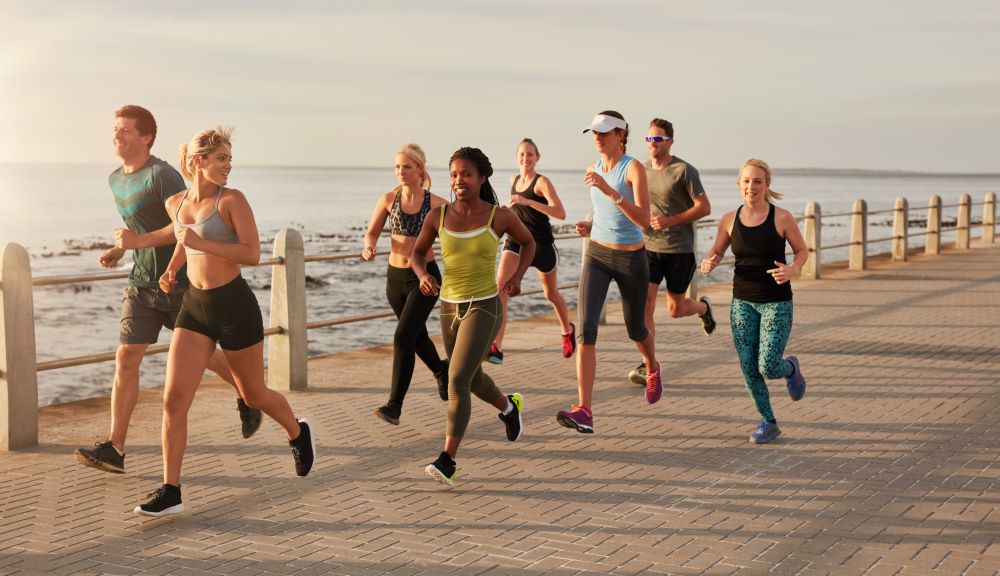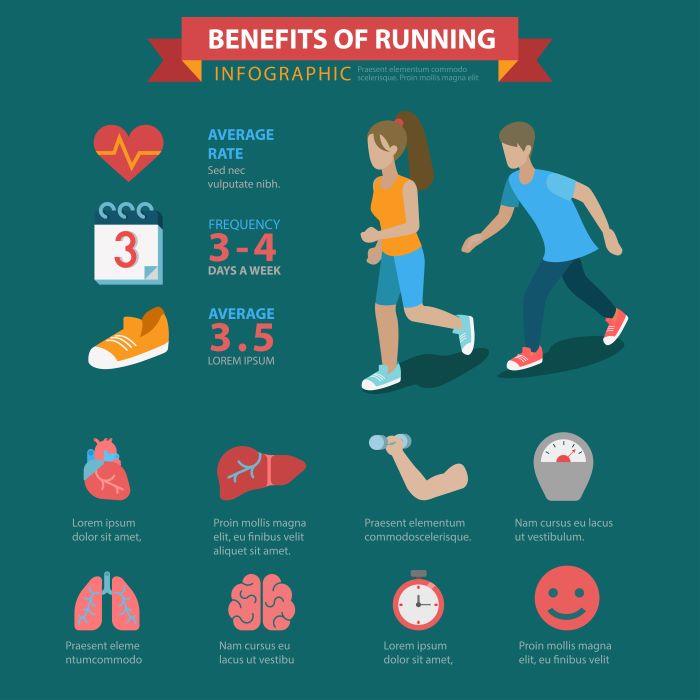For runners, understanding VO2 max is crucial for maximizing performance and achieving fitness goals. VO2 max refers to the maximum amount of oxygen your body can utilize during intense exercise, serving as a key indicator of aerobic fitness. The higher your VO2 max, the more efficiently your body can convert oxygen into energy, which directly impacts your endurance and speed on the trails.
Here’s why VO2 max is essential for runners:
- Performance Measurement: VO2 max provides a benchmark for assessing your cardiovascular fitness. By tracking changes in your VO2 max over time, you can gauge the effectiveness of your training regimen.
- Training Optimization: Knowing your VO2 max can help tailor your workouts. This allows you to focus on high-intensity interval training or other aerobic workouts that specifically boost your oxygen uptake.
- Endurance Building: A higher VO2 max enables you to maintain a faster pace for longer periods, which is particularly beneficial for long-distance races.
Incorporating workouts that specifically target VO2 max improvement can lead to significant performance gains. Visit our website to learn more and get started today! Click here.
Key Benefits of Improving Your VO2 Max

Enhancing your VO2 max brings a multitude of benefits that can elevate your running experience and overall fitness. Here are some of the key advantages:
- Increased Endurance: A higher VO2 max allows your body to sustain higher levels of exertion for longer durations. This is particularly beneficial for long-distance runners, as it translates to improved race performance and the ability to maintain a steady pace.
- Enhanced Speed: As your VO2 max improves, so does your capacity to run faster. This means you can push your limits during races and training sessions, achieving personal bests more frequently.
- Faster Recovery: Runners with a higher VO2 max typically experience quicker recovery times post-exercise. This allows you to return to training sooner and with less fatigue, reducing the risk of injury.
- Improved Mental Toughness: Training to improve your VO2 max often involves challenging workouts that can enhance your mental resilience. Pushing through difficult sessions can build confidence and determination, which are essential traits for successful runners.
- Overall Health Benefits: Beyond running, a higher VO2 max is associated with better cardiovascular health, reduced risk of chronic diseases, and improved metabolic function, contributing to a healthier lifestyle.
Incorporating specific training strategies aimed at boosting your VO2 max can lead to these substantial benefits, enhancing both your running performance and overall well-being.
Top Running Workouts to Boost Your VO2 Max

To effectively boost your VO2 max, incorporating specific workouts into your routine is essential. Here are some of the top running workouts that are highly effective:
- Interval Training: This involves alternating between high-intensity sprints and periods of rest or low-intensity running. For example, sprint for 30 seconds at full effort, followed by 1-2 minutes of jogging or walking. Repeat this cycle for 20-30 minutes. This method significantly challenges your cardiovascular system, leading to improvements in VO2 max.
- Tempo Runs: Tempo runs are sustained efforts at a challenging but manageable pace, typically 80-90% of your maximum heart rate. Aim to run at this pace for 20-40 minutes after a proper warm-up. This helps improve your lactate threshold, which in turn enhances your VO2 max.
- Fartlek Training: Fartlek, meaning ‘speed play’ in Swedish, combines continuous running with intervals of speed. During a run, alternate between fast segments and slower recovery segments. This workout is flexible and can be tailored to your fitness level, making it a fun way to improve your VO2 max.
- Hill Repeats: Running uphill is an excellent way to increase your aerobic capacity. Find a hill with a moderate incline and sprint to the top, then jog or walk back down for recovery. Repeat this 5-10 times. The added resistance of the incline significantly boosts your cardiovascular fitness.
- Long Runs: While not a high-intensity workout, incorporating longer runs (60-120 minutes) at a steady pace builds your aerobic base, ultimately supporting your VO2 max improvements over time.
Integrating these varied workouts into your training plan can help you efficiently target and enhance your VO2 max, leading to better overall performance and endurance.
Incorporating Interval Training for Maximum Results

Interval training is a powerful method to elevate your running performance, particularly when focusing on enhancing your VO2 max. This training style involves alternating between high-intensity bursts and active recovery periods, which not only boosts cardiovascular efficiency but also maximizes calorie burn.
To effectively incorporate interval training into your routine, consider the following steps:
- Choose Your Intervals: Start with a manageable duration for your high-intensity intervals, such as 20-60 seconds. As you adapt, you can gradually increase the intensity or duration. Common ratios include 1:1 (equal work and rest) or 2:1 (double the rest) depending on your fitness level.
- Warm-Up Properly: Always begin with a thorough warm-up to prepare your muscles and cardiovascular system. A 10-15 minute jog followed by dynamic stretches can significantly reduce the risk of injury.
- Vary Your Workouts: Mix different forms of intervals such as hill sprints, flat sprints, or treadmill intervals to keep your workouts exciting and target various muscle groups. This variation also helps prevent plateaus.
- Monitor Your Effort: During high-intensity intervals, aim for 85-95% of your maximum heart rate. Utilize a heart rate monitor or perceived exertion to gauge your effort, ensuring you’re pushing hard enough to stimulate VO2 max improvements.
- Cool Down: After completing your intervals, dedicate time to cooldown with a light jog or walk, followed by stretching. This aids in recovery and helps reduce muscle soreness.
By incorporating interval training into your running regimen, you’ll not only enhance your VO2 max but also build speed and endurance, paving the way for improved race performances and overall fitness.
Creating a Balanced Training Plan for VO2 Max

Creating a balanced training plan for enhancing your VO2 max is crucial for achieving well-rounded fitness and running performance. A comprehensive approach should encompass various training modalities to maximize your potential while minimizing the risk of burnout or injury.
Here are key components to consider when designing your training plan:
- Endurance Runs: These are the backbone of your training, focusing on building cardiovascular stamina. Aim for one long run per week at a comfortable pace, gradually increasing the distance as your fitness improves.
- Speed Work: Incorporate interval training and tempo runs to boost your speed and efficiency. Tempo runs, where you maintain a challenging but sustainable pace for 20-30 minutes, are particularly effective for improving your lactate threshold and VO2 max.
- Strength Training: Don’t overlook the importance of strength workouts, which enhance muscle strength, power, and running economy. Include exercises targeting your core, legs, and upper body at least twice a week. Resistance training can be performed using body weight, free weights, or resistance bands.
- Cross-Training: Engage in other forms of aerobic exercise, such as cycling, swimming, or rowing, to prevent overuse injuries and keep your routine fresh. Cross-training allows you to maintain cardiovascular fitness while giving your running muscles a break.
- Rest and Recovery: Schedule regular rest days and active recovery sessions to allow your body to heal and adapt. Incorporating yoga or stretching can improve flexibility and reduce muscle tension, aiding in recovery.
By integrating these elements into your training plan, you can effectively target your VO2 max while promoting overall fitness and resilience. A well-structured program not only prepares you for your next race but also helps sustain a lifelong passion for running.
Tips for Sustaining Your VO2 Max Progress
Maintaining your VO2 max gains requires ongoing commitment and strategic adjustments to your training regimen. As you progress, it’s essential to implement specific strategies to ensure you continue to reap the benefits of your hard work. Here are some effective tips for sustaining your VO2 max progress:
- Consistency is Key: Regular training is vital for maintaining your VO2 max. Aim to run at least three to four times a week, incorporating a mix of endurance, speed work, and strength training sessions.
- Monitor Your Intensity: Utilize tools such as heart rate monitors or pacing strategies to ensure you are training at the appropriate intensity. Maintaining the right balance between aerobic and anaerobic workouts will help sustain your improvements.
- Set New Goals: Keep your motivation high by setting new running challenges, whether it’s participating in races, achieving a personal best, or increasing your weekly mileage. New goals can provide a sense of purpose and excitement in your training.
- Stay Hydrated and Fuel Properly: Nutrition plays a crucial role in recovery and performance. Ensure you’re consuming a balanced diet rich in carbohydrates, proteins, and healthy fats, and stay hydrated to optimize your training outcomes.
- Listen to Your Body: Pay attention to how your body responds to training. If you notice signs of fatigue or overtraining, don’t hesitate to adjust your workouts or take additional rest days to recover.
Implementing these tips will help you not only maintain your VO2 max but also enhance your overall running performance. By staying committed and adaptable, you’ll ensure that your running journey remains rewarding and enjoyable.
Visit our website to learn more and get started today! Click here.


